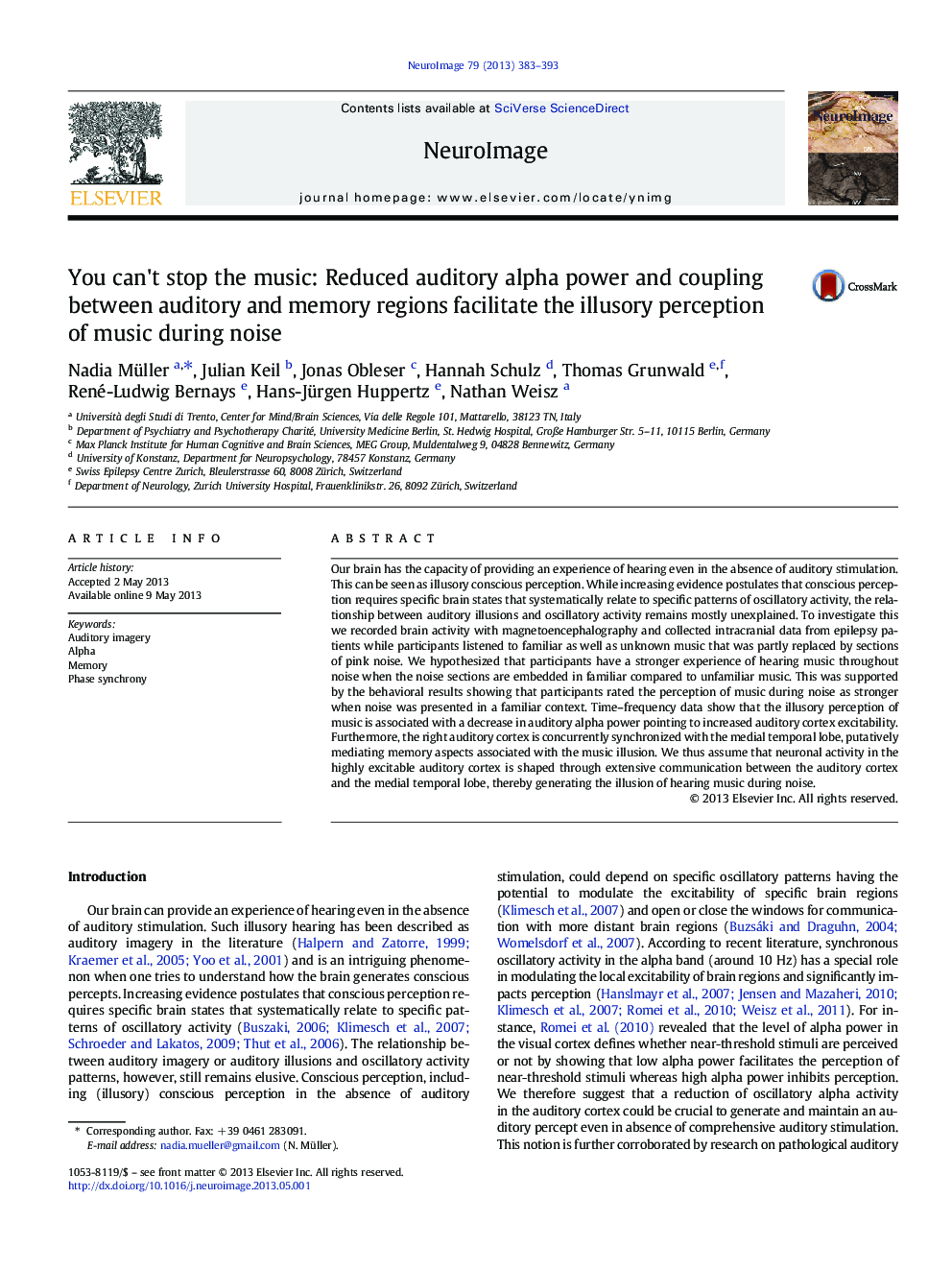| کد مقاله | کد نشریه | سال انتشار | مقاله انگلیسی | نسخه تمام متن |
|---|---|---|---|---|
| 3071991 | 1580925 | 2013 | 11 صفحه PDF | دانلود رایگان |

• Reduced auditory alpha power facilitates the illusory perception of music.
• Coupling between auditory and memory regions supports illusory music perception.
• The signatures for illusory music perception are evident in the MEG and ECoG data.
• Music perception during noise is stronger for familiar than unfamiliar context.
Our brain has the capacity of providing an experience of hearing even in the absence of auditory stimulation. This can be seen as illusory conscious perception. While increasing evidence postulates that conscious perception requires specific brain states that systematically relate to specific patterns of oscillatory activity, the relationship between auditory illusions and oscillatory activity remains mostly unexplained. To investigate this we recorded brain activity with magnetoencephalography and collected intracranial data from epilepsy patients while participants listened to familiar as well as unknown music that was partly replaced by sections of pink noise. We hypothesized that participants have a stronger experience of hearing music throughout noise when the noise sections are embedded in familiar compared to unfamiliar music. This was supported by the behavioral results showing that participants rated the perception of music during noise as stronger when noise was presented in a familiar context. Time–frequency data show that the illusory perception of music is associated with a decrease in auditory alpha power pointing to increased auditory cortex excitability. Furthermore, the right auditory cortex is concurrently synchronized with the medial temporal lobe, putatively mediating memory aspects associated with the music illusion. We thus assume that neuronal activity in the highly excitable auditory cortex is shaped through extensive communication between the auditory cortex and the medial temporal lobe, thereby generating the illusion of hearing music during noise.
Journal: NeuroImage - Volume 79, 1 October 2013, Pages 383–393